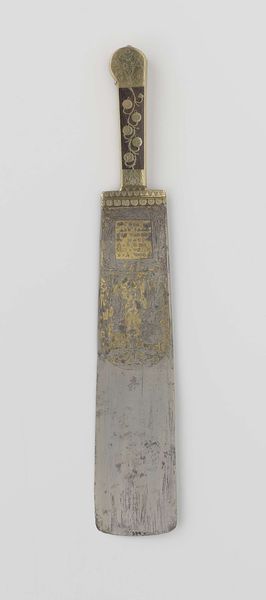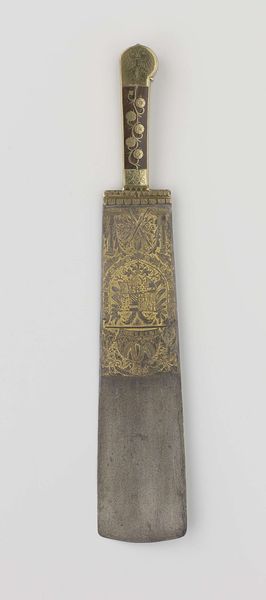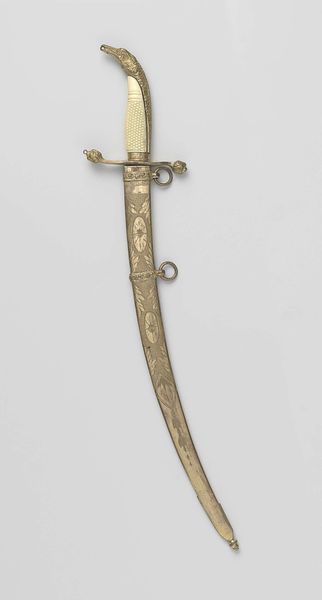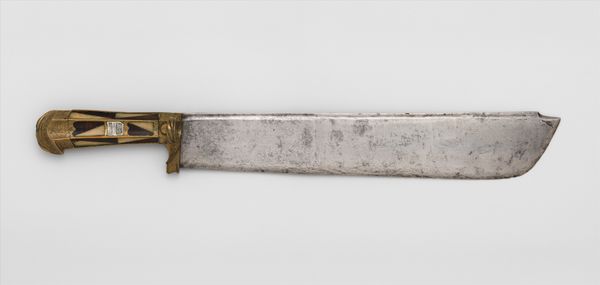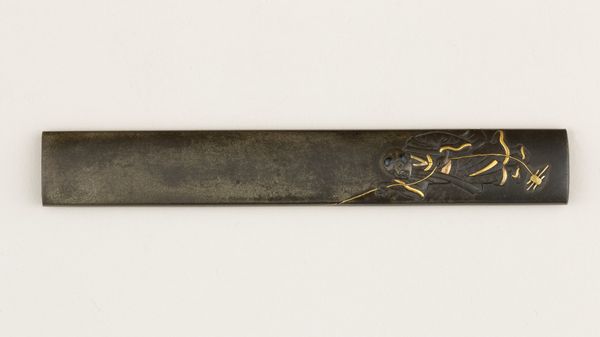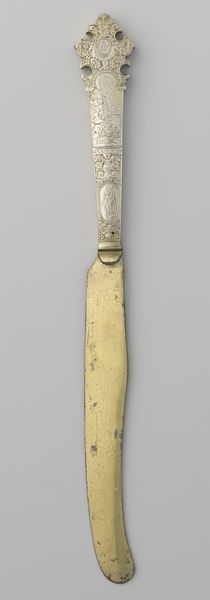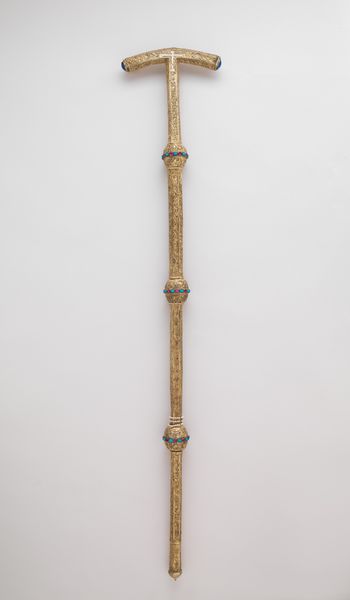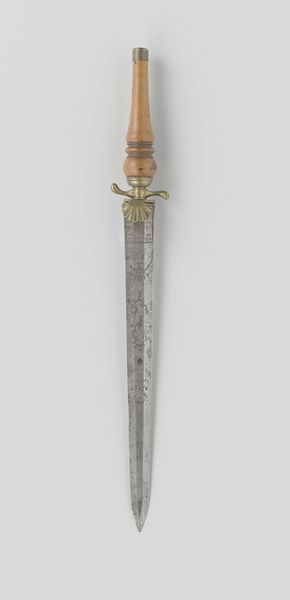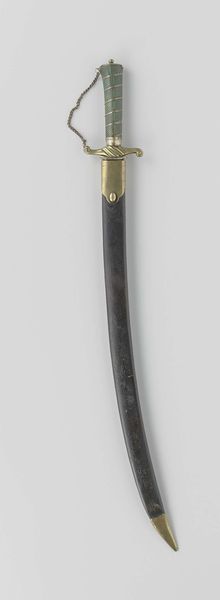
carving, metal, ivory
#
carving
#
metal
#
11_renaissance
#
ivory
Dimensions: length 20.3 cm, width 2.0 cm, thickness 1.0 cm
Copyright: Rijks Museum: Open Domain
Editor: This intriguing piece is titled "Four Knives and a Fork Belonging to Emperor Charles V," crafted around 1532. It's currently housed in the Rijksmuseum and consists of metal and ivory. I am drawn to the embellishments along the handle, but what do you see in this piece? Curator: Indeed, these aren’t merely utensils; they’re potent symbols of power and status. Consider the imagery carved into the ivory handle. These weren't made by the Emperor, but rather were *for* him. Note how the ivory lends an air of refinement and elegance, reflecting Renaissance ideals of taste and grandeur. The weight of these objects rests not only in their craftsmanship but in what they represent: order, wealth, dominance. What stories do you think they silently tell about Charles V? Editor: That's a really good question. Perhaps it illustrates how objects tied to important leaders are often treated like relics, representative of larger ideas of legacy and lineage. The embellishments suddenly feel much more deliberate. How does the knife as an object relate to its more symbolic weight here? Curator: Well, even a common object can elevate itself to a profound symbol! In that era, a knife represented civility. This object stands testament to an age when power and prestige were meticulously crafted, reminding us that the mundane can indeed become extraordinary when intertwined with symbolism and intent. And this symbolism carries on throughout the centuries – the idea of legacy never dies! Editor: That makes so much sense! Thank you. Curator: It’s my pleasure.
Comments
rijksmuseum about 2 years ago
⋮
Charles V acquired this portable cutlery set in Italy. The two large knives bear his arms and the chain of the Order of the Golden Fleece. Above this is the emperor’s crown and below it the Burgundian cross of Saint Andrew with the mythical pillars of Hercules (signifying the end of the world). They are all symbols of the emperor’s power.
Join the conversation
Join millions of artists and users on Artera today and experience the ultimate creative platform.

